
Doug Allan is a Canon pro and award-winning wildlife photographer and film-maker who regularly shoots breathtaking footage for BBC nature programmes with David Attenborough, including The Blue Planet, Planet Earth, and Frozen Planet. One of the headline speakers at The Photography Show Virtual Festival in September, we caught up with Doug to talk about how he got started as a photographer and film-maker, the transition from stills to film, the Canon equipment he selects for assignments, and how he overcomes the extreme conditions he faces while in the coldest and most challenging places on earth.
How did you make the move from being a diver to a wildlife photographer?
I was 24 when I first went to Signy Research Station (Signy is a small island in the South Orkneys, at the head of the Weddell Sea in Antarctica), and I’d describe the eight years down south that followed as my formative years. Working as a diver, my job was to make sure that the scientists and the biologists got their jobs done safely. And I was also encouraged to train anyone on the base who wanted to learn to dive.
For me at that time, it was near perfect. I learned a lot about cold-water diving, as well as how to manage in the cold topside. l learned my limits; the difference between feeling chilly, approaching hypothermia, and being frostbitten. It gave me a feeling for snow and ice that I took on to my filming career.
Denne historien er fra December 2020-utgaven av PhotoPlus : The Canon Magazine.
Start din 7-dagers gratis prøveperiode på Magzter GOLD for å få tilgang til tusenvis av utvalgte premiumhistorier og 9000+ magasiner og aviser.
Allerede abonnent ? Logg på
Denne historien er fra December 2020-utgaven av PhotoPlus : The Canon Magazine.
Start din 7-dagers gratis prøveperiode på Magzter GOLD for å få tilgang til tusenvis av utvalgte premiumhistorier og 9000+ magasiner og aviser.
Allerede abonnent? Logg på
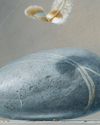
The Art of Copying Art - James Paterson shows you how to use your Canon gear to capture artwork and paintings the right way with simple camera and lighting skills
Whether you want to capture a painting like the above, digitise old prints or reproduce any kind of canvas, there's real skill in capturing artwork with your camera. Not only do you need the colours to be accurate, you also need to master the spread, angle and quality of the light to minimise glare and show the work at its best.This painting by the artist Bryan Hanlon has a wonderfully subtle colour palette. To reproduce the painting in print and digital form, it needs to be captured in the right way.

Fright night
Canon photographer and digital artist Alexander loves to craft incredible fantasy scenes with a spooky horror twist
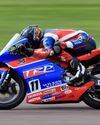
Sharpen your shots with DPP
Sharpening a digital image also increases contrast at the edge of details

CANON ImagePrograf PRO-1100
Deeper blacks, better bronzing, greater lifespan and 5G Wi-Fi -Canon's new printer is full of new tech, says
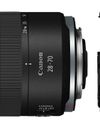
Canon's new 'kit lens' is actually a half-price f/2.8 trinity lens!
The Canon RF 28-70mm F2.8 IS STM lacks a red ring, but borrows premium features from its L-series siblings

DREW GIBSON
Pro motorsports photographer Drew on why he hasn't (yet) switched to Canon's mirrorless system, why old-school techniques can be the most reliable, and the lessons learned from more than a decade shooting the world's biggest car brands
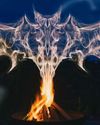
Up in smoke
Make a smoky shape in Affinity Photo and get to grips with the amazing Liquify Persona under the guidance of James Paterson

Expand your creativity with Generative Fill
Photoshop's Al-powered feature brings revolutionary new tools to image editing. James Paterson reveals all...
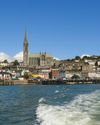
Turn your images into vintage postcards
Wish you were here? Sean McCormack explains how you can give your summer photographs a vintage postcard look
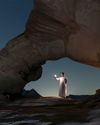
The Angel Malibu
Light painting an American movie producer in the Wadi Rum Desert in Jordan was a highly unlikely evening out for David!